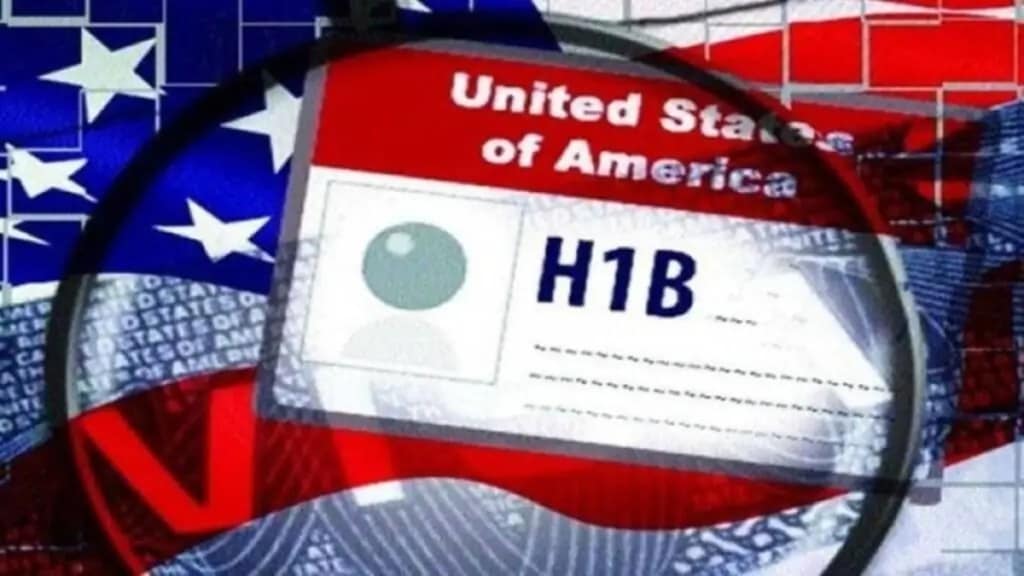America’s Department of Labor has started deleting H-1B visas and other visa applications from their record. This new rule will impact H-1B Visa applicants as their US records will no longer be available.
The U.S. Department of Labor is removing visa records older than five years from the Foreign Labor Application Gateway system, causing historical case data to be unavailable, making it difficult for applicants and legal representatives to retrieve these details.
Varun Singh, MD, XIPHIAS Immigration says, “For past H-1B applicants, this move may pose challenges, especially if they need proof of prior filings for visa renewals, employer verification, or legal disputes. Employers and applicants who haven’t kept copies of their Labor Condition Applications (LCAs) and approvals may face difficulties in re-establishing past employment records. This also means attorneys and HR teams handling immigration matters must now be extra vigilant in record-keeping.”
The Department of Labor’s Employment and Training Administration, Office of Foreign Labor Certification (OFLC) had informed the various stakeholders that records will be deleted from the Foreign Labor Application Gateway (FLAG) system beginning at midnight on March 20.
“While the U.S. regularly updates and maintains immigration databases, such a mass deletion of historical labor application data appears to be a significant policy shift. Typically, records are archived, but their outright removal from the system after five years is a new precedent that could impact applicants seeking extensions, amendments, or historical reference to past filings,” says Varun.
The Foreign Labor Access Gateway (FLAG) is a portal that assists American firms in locating competent workers while guaranteeing both domestic and international worker protections. FLAG contains all applications for Temporary Labor Conditions, including those for the H-1B, H-1B1, H-2A, H-2B, E-3, and even Permanent Labor Certification (PERM) visas.
But, not all records will be deleted from March 20. Not all visa holders will be impacted from today. Records within the Foreign Labor Access Gateway (FLAG) that are older than 5 years from the final determination date will be deleted.
US employers were, therefore, asked to download their employees’ records by March 19. A US employer has been required to download any cases in the FLAG system that are more than five years old from the date of final determination by March 19, 2025.
From March 20, 2025, the authorized Record Control Schedule will go into effect. The final determination date noted in each case’s FLAG System will determine which eligible case records are deleted. Cases with a March 21, 2020, final determination date, for instance, will be eliminated on March 21, 2025.
So, what should H-1B visa holders do now? “H-1B applicants should take this as a wake-up call—always maintain personal copies of your immigration records, including LCAs, I-797 approvals, and PERM certifications. Employers and attorneys should also proactively archive older documents outside of government systems to prevent future complications. Given the evolving nature of U.S. immigration policies, being proactive and well-documented is the best way to stay ahead of unforeseen changes,” advises Varun,
The following OFLC programs will be impacted by this implementation:
- Prevailing Wage Determinations (PWD)
- Permanent Labor Certification Applications (PERM)
- Temporary Labor Certification Applications (H-2A, H-2B, CW-1 visas)
- Temporary Labor Condition Applications (H-1B, H-1B1, and E-3 visas)
In any case, the US has implemented a new beneficiary-centric selection process for H-1B registrations.
Under the beneficiary-centric selection procedure, U.S. Citizenship and Immigration Services (USCIS) would choose registrations based on each beneficiary rather than by registration.
No matter how many registrations are filed on their behalf, each distinct beneficiary who has a registration filed on their behalf will only be considered once in the selection process.
The reason for switching to a beneficiary-centric selection process for H-1B registrations was to reduce the possibility of gaming the system to increase the chances of selection and to help ensure that each beneficiary has the same chance of being selected, regardless of how many registrations are submitted on their behalf.
Compared to the previous lottery method, the most recent H-1B cap registration data suggest that the current beneficiary-centric selection procedure has achieved the goal of preventing firms and individuals from gaming the system.
The 2026 H-1B cap season opens on March 7, 2025, and the random selection of beneficiaries will be over by March 24.
Every fiscal year, the initial registration period lasts for at least 14 calendar days. Prospective petitioners and representatives must electronically register each beneficiary for the selection process and pay the corresponding registration cost for each beneficiary between March 7 and March 24, 2025, using an online account with the U.S. Citizenship and Immigration Services (USCIS). The 2026 H-1B cap-season registration fee is $215 for each registration filed on behalf of each beneficiary.
The H-1B nonimmigrant visa program permits temporary employment of foreign workers in specialty occupations, requiring specialized knowledge and a bachelor’s or higher degree. Between October 2022 and September 2023, 72.3% of all H-1B visas issued were grabbed by Indian skilled workers. India accounts for 28% of international student jobs in the US.
In each fiscal year from October 1 to September 31, Congress mandates that 65,000 H-1B visas be issued under the standard quota and 20,000 H-1B visas under the master’s cap.
